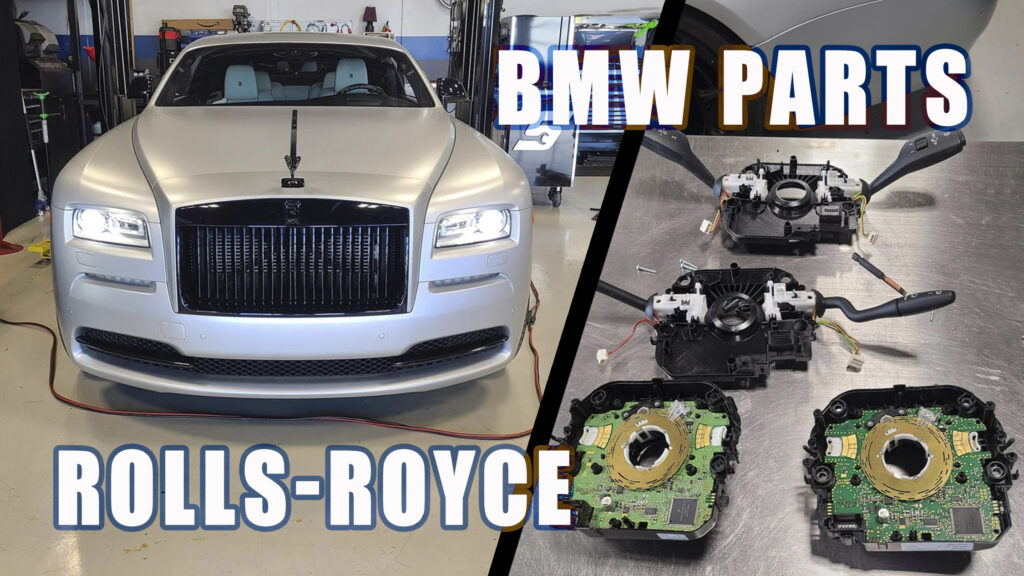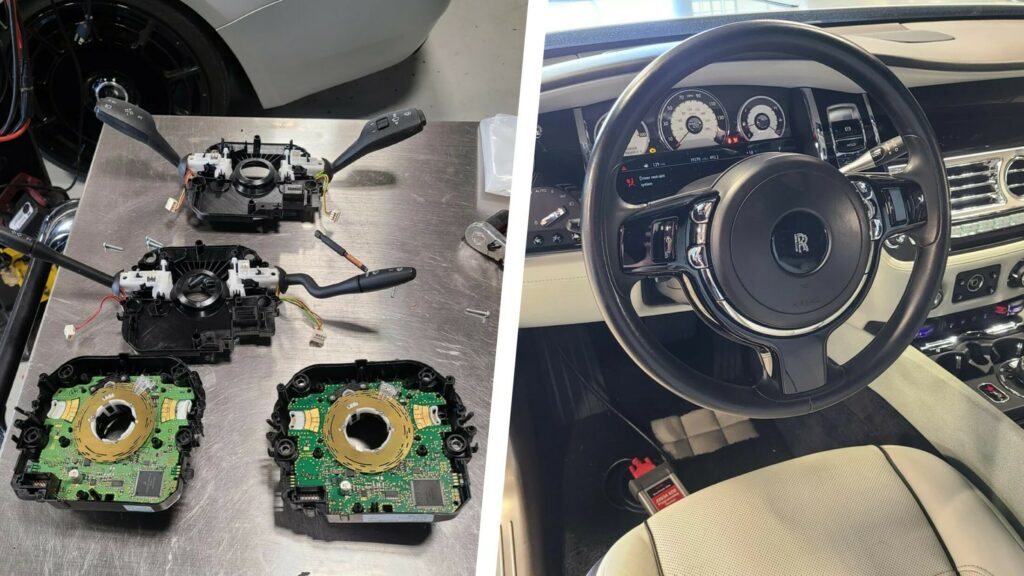It’s a clever cost-saving trick for Rolls-Royce Wraith owners with access to BMW 6-Series parts
December 24, 2023 at 14:10
 –>
–> 
–>
It’s a well-known fact among car enthusiasts that mechanically related models from different automakers within the same group often share numerous components to optimize development and production costs. However, when you come across Rolls-Royce charging $2,500 for a clockspring that could be swapped with a nearly identical $160 part from BMW, it raises questions, you can’t help but wonder what else is hidden behind the pricey service catalogs of luxury brands.
A clockspring, also known as a spiral cable, is a coiled wire inside a car’s steering column that enables electrical connections between the stationary part (steering column) and the rotating part (steering wheel) in a car. It’s a vital component for functions like the horn, airbag, and other steering wheel-mounted controls.
Our story began when the owner of a shiny and opulent Rolls-Royce Wraith encountered an issue with the clockspring, and the service center quoted him an eye-watering $2,500 for a replacement. While most Rolls-Royce clients would fork over the cash without so much as a raised eyebrow, this savvy owner had other plans. They embarked on a daring quest to uncover a more budget-conscious solution, cheekily thumbing their nose at the extravagance of it all.
advertisement scroll to continue
More: A Set Of Bugatti Chiron Super Sport Front Body Panels Listed For An Absurd $400,000

The Wraith owner stumbled upon a fascinating, albeit not entirely surprising revelation: the clockspring from a BMW 6-Series, seemingly from the F12 generation, perfectly matched the one residing in their Rolls-Royce, provided they engaged in some stalk swapping. The net result? This component came with a price tag of $160, delivering remarkable savings of $2,340.
The tale, complete with photographic evidence of the interchangeable parts, made its way to a Reddit thread dubbed “Justrolledintotheshop,” courtesy of user Fixitsteven. Predictably, the post achieved viral status, garnering hundreds of comments. Many users applauded the resourceful Wraith owner for uncovering the component compatibility and sharing their experience, while some confessed to similar escapades with their Rolls-Royces, experimenting with various BMW parts.
The Rolls-Royce Wraith coupe, which has now been discontinued, shared its foundation with a modified version of the BMW 7-Series F01 architecture, akin to the closely related Dawn convertible and the prior-generation Ghost. This means that numerous mechanical components and electronics were common with their BMW counterparts (7-Series and 6-Series), presenting a clever option for Rolls-Royce owners who value thriftiness in maintenance and repairs and are unafraid to engage in some hands-on work.
Even as the all-new second-generation Ghost transitioned to the Rolls-Royce-specific Architecture of Luxury aluminum chassis, we have every reason to believe that many BMW components remain cleverly concealed from sight.
After all, there’s little point in reinventing the wheel when an automaker can draw from its parent company’s parts inventory, especially when those components are out of view and indistinguishable to the customer. This practice isn’t unique to Rolls-Royce; it extends to rival offerings from Bentley (within the VW Group), Maserati (Stellantis) and Maybach (under Mercedes-Benz), as few luxury automakers exist without the financial and technological support of a larger corporation.
